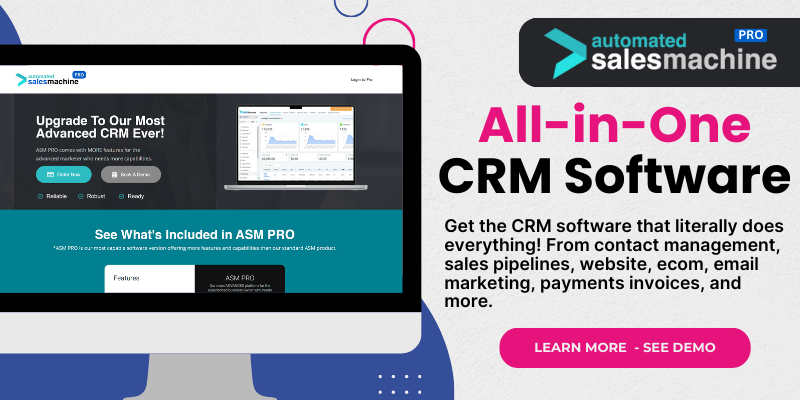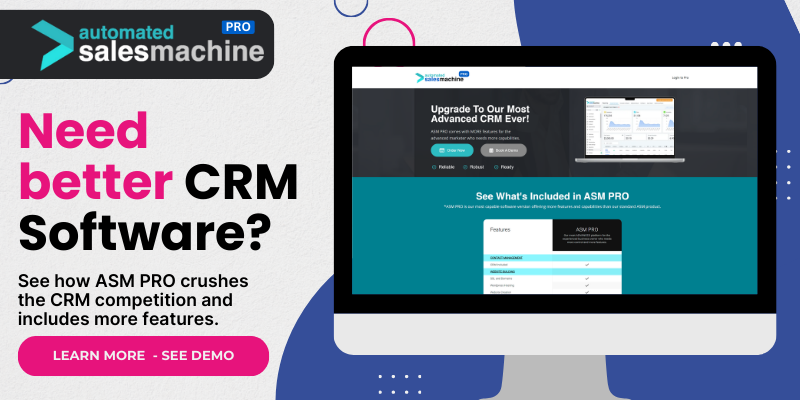Understanding the Unique Needs of Associations
What Makes Associations Different?
Working with associations is a distinct experience for many reasons. First off, associations often thrive on community building, fostering connections over simple transactions. They aren’t just about selling services or products; it’s about creating a loyal community around shared interests or goals. This is a key factor to consider when selecting a CRM system.
Additionally, associations tend to have a wide array of members with differing needs and expectations. Maintaining these varied relationships requires CRM software that can segment and personalize interactions effectively. I’ve often found that a one-size-fits-all approach just doesn’t work in this space.
Finally, associations frequently manage various events, resources, and educational offerings. A good CRM helps streamline all these elements, making it easier to manage member engagement and satisfaction over time.
Why CRM is Crucial for Associations
So, why is having a solid CRM system such a big deal for associations? From my experience, the right CRM can significantly enhance communication with members and prospects. It centralizes all member information, making it easy to track interactions and history, which helps in personalizing outreach.
Moreover, CRMs can automate routine tasks, freeing up valuable time for staff to focus on strategy rather than the minutiae. I’ve seen firsthand how much a well-structured CRM can transform an association’s operational efficiency.
Finally, effective reporting and analytics features help associations understand their engagement levels, measure the success of events, and pinpoint areas for improvement. It’s like having a pulse on the organization’s lifeblood at all times.
Key Features to Look for in Association CRMs
When searching for the perfect CRM, there are some standout features that I always recommend looking for. First and foremost, it’s essential to find software that allows for member segmentation. This means being able to categorize members based on their interests, demographics, or engagement level, so you can tailor your communications effectively.
Alongside segmentation, integration capabilities are crucial. A CRM shouldn’t operate in a vacuum. I always suggest choosing software that can seamlessly integrate with other tools, like email marketing systems, event management platforms, or financial software.
Finally, user-friendly design cannot be overstated. A good CRM should be intuitive for not just the tech-savvy staff but also for those who may not be as comfortable with technology. It’s all about increasing usability across the board!
Exploring Top CRM Solutions for Associations
Understanding Membership Dynamics with CRM
One of the leading CRM options I’ve personally come to admire is MemberClicks. It’s designed specifically for associations and makes handling member dynamics a breeze. With its member management features, you can easily track memberships, renewals, and even send out reminders.
Another standout, Wild Apricot, offers a rich set of tools for managing events, memberships, and donations all in one place. I’ve found it so beneficial because it’s tailored to the unique needs of nonprofits and associations, ensuring that it meets our specific demands.
Furthermore, Salesforce’s Nonprofit Cloud can also be a great choice for those looking for extensive customizability. Though it may require a bit more setup, the flexibility it offers is something I can’t overlook for larger organizations.
Feature-Rich Tools for Enhanced Engagement
Many of today’s CRMs, like Higher Logic, focus on enhancing member engagement through community-building features. I’ve seen this directly impact retention rates positively, as members genuinely appreciate having a space to connect with each other.
Also, let’s not forget about the importance of automated marketing. CRMs like Nimble and Constant Contact can help you design email campaigns seamlessly, keeping your members informed about key events and updates without requiring too much time.
Lastly, don’t underestimate the power of data. CRMs with strong analytics capabilities, like Affinity, give you valuable insights that help tailor your strategies to better serve members’ needs and preferences.
Scaling Operations with the Right Technology
As associations grow, so do their operational needs. This is where CRMs like CiviCRM come into play. It’s open-source, meaning you can tailor it to your organization’s unique requirements without breaking the bank.
On top of that, I’ve found that CRMs like Zoho help you keep everything organized as your membership base expands. With various features such as task automation, email marketing, and project management built right in, scaling becomes so much smoother.
Lastly, you can’t go wrong with HubSpot if you’re looking for a comprehensive solution. From CRM to marketing tools, it has it all – something I’ve always appreciated as it eliminates the need for juggling multiple platforms.
Making Sense of Pricing and Value
Understanding Different Pricing Models
Price can definitely be a big factor when choosing a CRM. The good news it that many options offer tiered pricing models tailored to fit different budgets. For example, platforms like MemberClicks offer various pricing packages based on the size of your organization.
Another approach I’ve come across is the per-user pricing model, as seen with Salesforce. While it can get pricey, the return on investment is often well worth it when you consider the value of advanced features and analytics.
Lastly, open-source models like CiviCRM have no upfront costs, making them attractive for budget-conscious associations looking for flexibility. Just be aware that while there are no licensing fees, there may be costs associated with customization and support.
Evaluating ROI
ROI can sometimes feel tricky to measure, but trust me, it’s essential. The right CRM will ultimately save your team time and resources. I can say from experience that once you have systems in place for automation, the ability to analyze data, and smooth membership management, the benefits become clear.
Moreover, consider how retaining members through better engagement can lead to increased revenue over time. CRMs that help foster relationships often lead to higher retention rates, making them a worthy investment.
Part of evaluating ROI includes looking at operational efficiencies. Are team members spending less time on repetitive tasks? Are they able to focus more on strategic initiatives? The sooner you can answer “yes” to these questions, the better the CRM is likely performing for your association.
Making Informed Decisions
Prioritizing features based on your association’s specific needs is key when evaluating CRMs. I always recommend making a list of the essential features your team cannot live without. This will guide you towards the best choices and ease the decision-making process.
Additionally, I highly suggest taking advantage of free trials offered by many CRM solutions. This hands-on approach allows you to see how each tool measures up in real-world scenarios, beyond what the marketing materials tell you.
Finally, always seek feedback from your team during the evaluation phase. Remember that they will be the day-to-day users, so their input is invaluable when it comes to ensuring a smooth transition to new software.
Final Thoughts on Choosing the Right CRM
Your Association’s Unique Journey
Ultimately, every association’s journey is unique, and the CRM you choose should reflect that. It’s vital to understand your specific needs and how each potential platform aligns with those requirements. Over the years, I’ve learned that investing in the right CRM can be transformative, elevating not just member engagement, but overall organizational effectiveness.
When in doubt, prioritize user experience and support. I’ve encountered systems that, on paper, looked amazing, but if my team struggled to use them, it just wasted time and money. Make sure to pick a solution that has solid support, so you’re never left feeling overwhelmed.
Lastly, remember that change takes time. A CRM is a powerful tool, but it requires buy-in and adaptation from your team. Embrace the transition, lean on the new system, and watch how it revolutionizes the way you engage with your members.
FAQs
1. What features are essential in an association CRM?
Essential features typically include member segmentation, event management, and reporting tools. These features help foster better communication and ensure a streamlined operation.
2. Are there any free CRM options for associations?
Yes, some systems like CiviCRM offer free, open-source solutions that can be customized according to your association’s needs, though there may be costs associated with hosting and support.
3. How do I measure the ROI of a CRM?
Measuring ROI includes analyzing time saved from automation, improved member retention rates, and increased revenue from better-organized engagement strategies.
4. How long does it usually take to implement a new CRM?
Implementation time can vary significantly based on the complexity of the system and the size of your organization. Generally, expect a few weeks to a few months to fully transition.
5. Can CRMs integrate with other tools I already use?
Most modern CRMs offer integration capabilities with other software applications, such as email marketing tools and financial management systems, making them quite versatile.

